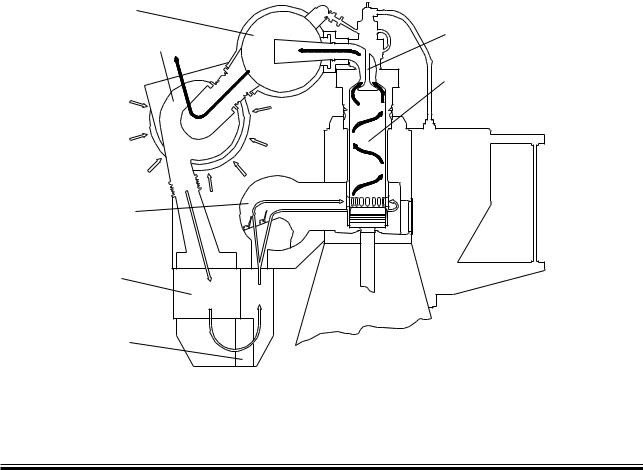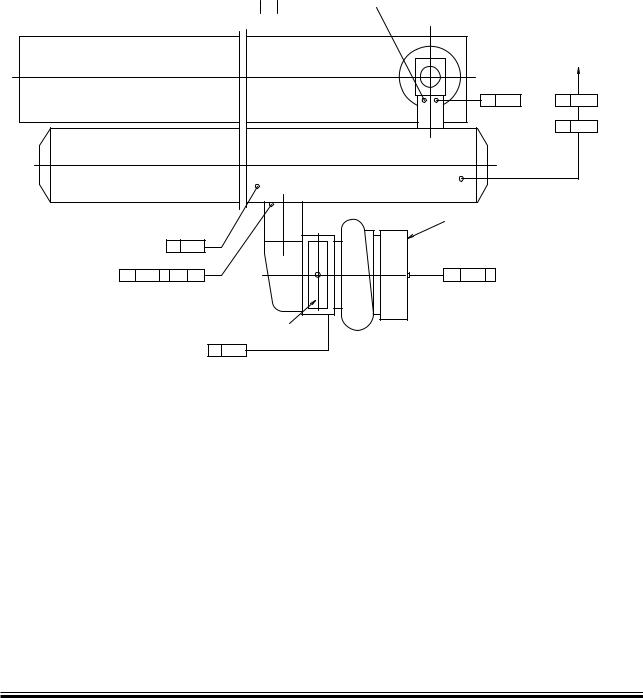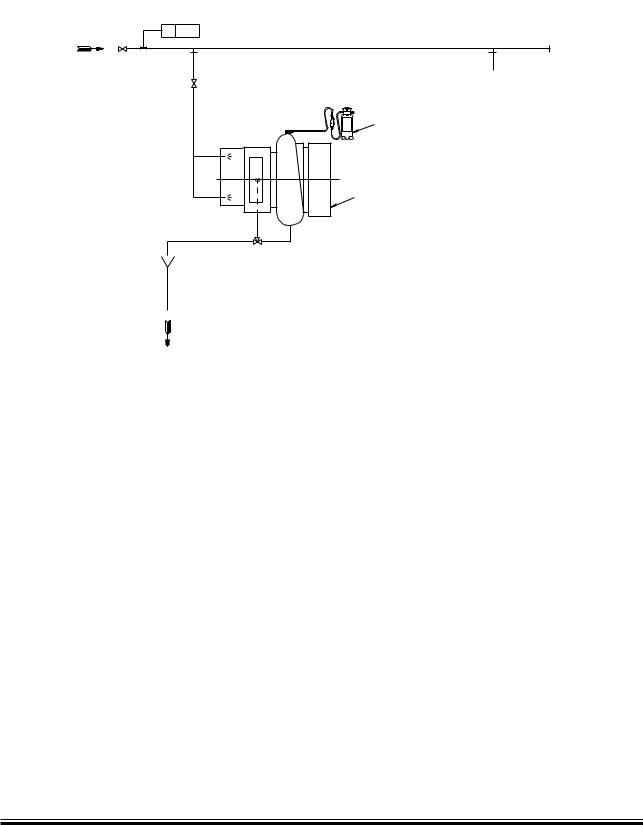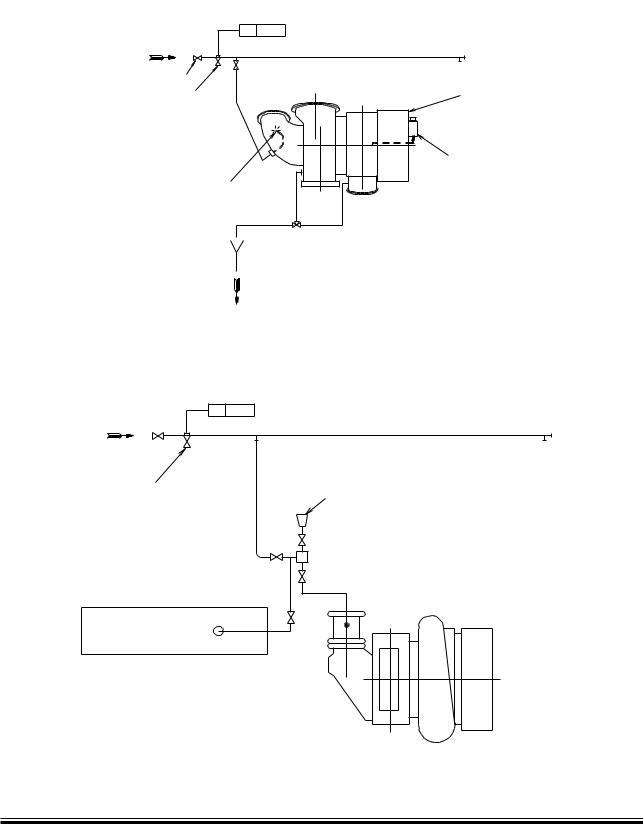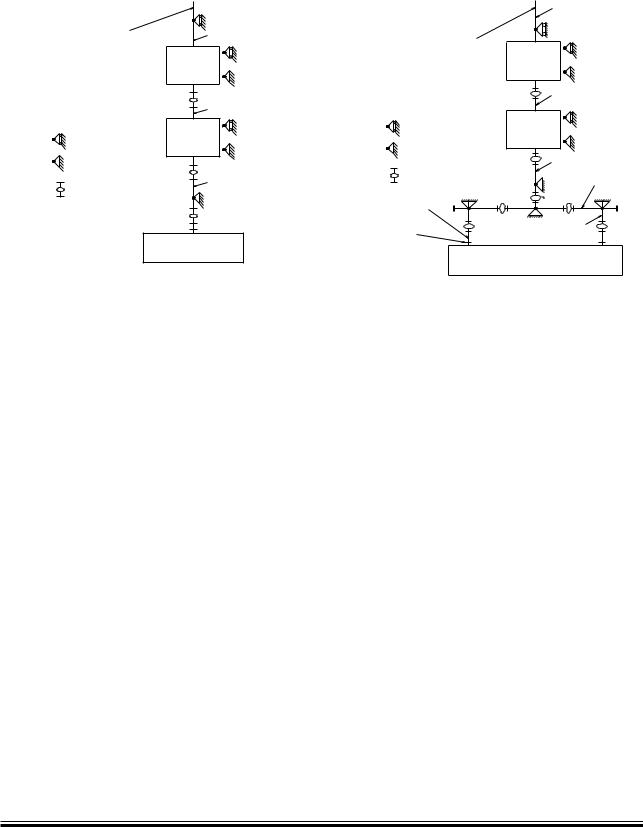Exhaust Gas System for Main Engine
At the specified MCR of the engine, the total back pressure in the exhaust gas system after the turbocharger (as indicated by the static pressure measured in the piping after the turbocharger) must not exceed 350 mm WC (0.035 bar).
In order to have a back pressure margin for the final system, it is recommended at the design stage to initially use a value of about 300 mm WC (0.030 bar).
The actual back pressure in the exhaust gas system at specified MCR depends on the gas velocity, i.e. it is proportional to the square of the exhaust gas velocity, and hence inversely proportional to the pipe diameter to the 4th power. It has by now become normal practice in order to avoid too much pressure loss in the pipings to have an exhaust gas velocity at specified MCR of about 35 m/sec, but not higher than 50 m/sec.
For dimensioning of the external exhaust pipe connections, see the exhaust pipe diameters for 35 m/sec, 40 m/sec, 45 m/sec and 50 m/sec respectively, shown in Table 15.07.02.
As long as the total back pressure of the exhaust gas system (incorporating all resistance losses from pipes and components) complies with the above mentioned requirements, the pressure losses across each component may be chosen independently, see proposed measuring points (M) in Fig. 15.05.01. The general design guidelines for each component, described below, can be used for guidance purposes at the initial project stage.
Exhaust gas piping system for main engine
The exhaust gas piping system conveys the gas from the outlet of the turbocharger(s) to the atmosphere.
The exhaust piping is shown schematically in Fig. 15.04.01.
Page of 1
The exhaust system for the main engine comprises:
•Exhaust gas pipes
•Exhaust gas boiler
•Silencer
•Spark arrester (if needed)
•Expansion joints (compensators)
•Pipe bracings.
In connection with dimensioning the exhaust gas piping system, the following parameters must be observed:
•Exhaust gas flow rate
•Exhaust gas temperature at turbocharger outlet
•Maximum pressure drop through exhaust gas system
•Maximum noise level at gas outlet to atmosphere
•Maximum force from exhaust piping on turbocharger(s)
•Sufficient axial and lateral elongation ability of expansion joints
•Utilisation of the heat energy of the exhaust gas.
Items that are to be calculated or read from tables are:
•Exhaust gas mass flow rate, temperature and maximum back pressure at turbocharger gas outlet
•Diameter of exhaust gas pipes
•Utilisation of the exhaust gas energy
•Attenuation of noise from the exhaust pipe outlet
•Pressure drop across the exhaust gas system
•Expansion joints.


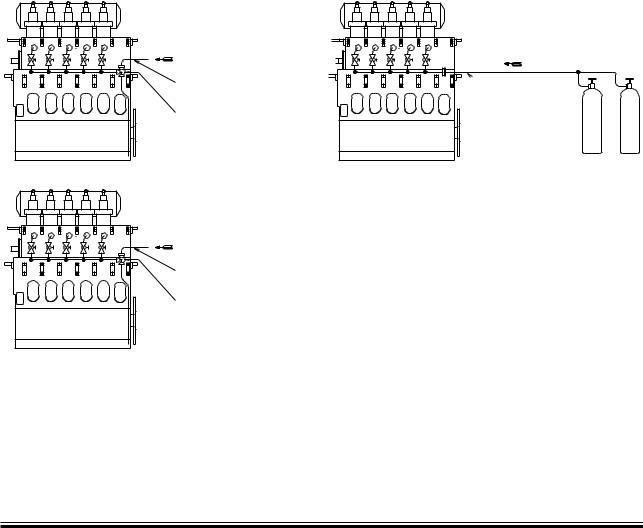
 $.æ MM
$.æ MM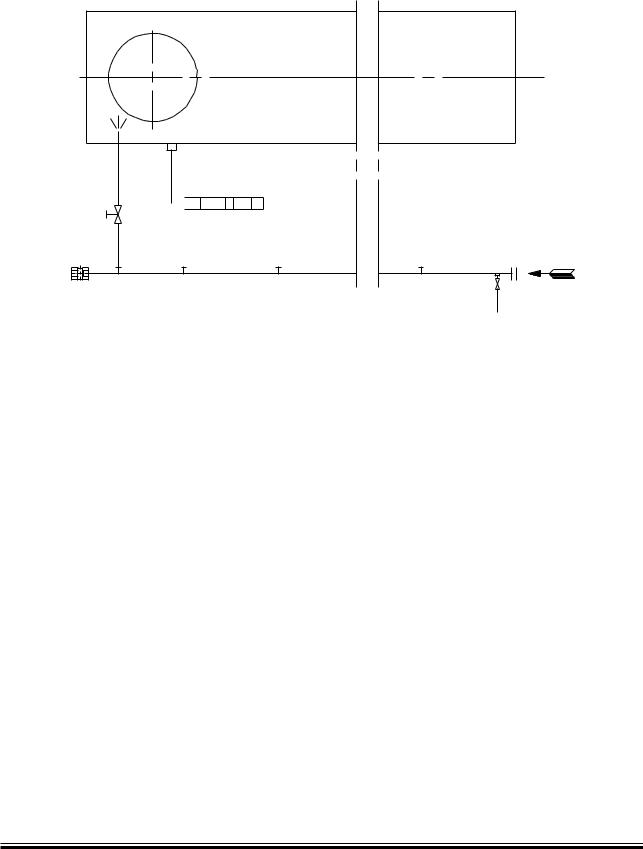

 4%æææ æææ)æææ!(æææ9
4%æææ æææ)æææ!(æææ9
